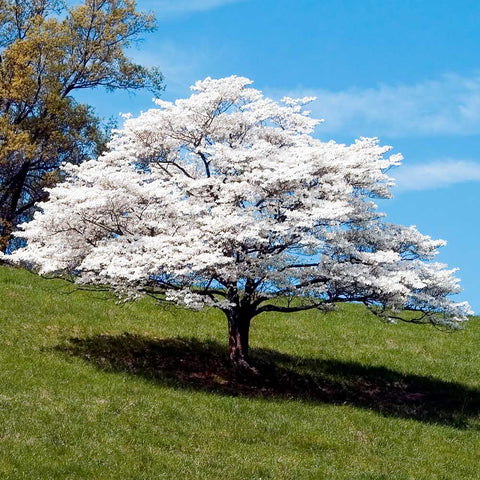When people hear the term “greening the planet,” they often think of tree-huggers or sailing the ocean to save whales. As crucial as these attention-getting programs are, it is a myriad of little things that many people are already doing that will once again help return nature to its natural balance. It will just take more people doing more of these little things more often to begin to make a significant difference.
The list of little things is lengthy but can be summarized in four broad, interlinked categories.
1. Waste Reduction: Landfills are becoming full and more expensive to operate and maintain. Over half of the trash is recyclable material of some sort. Reducing trash saves money and helps eliminate areas that have become dead zones for years. Using reusable canvas shopping bags rather than plastic ones saves trash. Recycling cans, bottles, construction materials, and yard waste can make a massive dent in the landfill load. It is estimated that wasted food accounts for twenty percent of trash. Buying wisely and consuming what you buy reduces waste significantly.
2. Recycling: Aluminum cans and paper are the only two consumer items recycled, and metals are also recycled commercially. Both aluminum and paper have direct economic reasons for recyclers. Many plastics, metal cans, and glass items can also be recycled, but the economic benefit needs to be apparent enough to increase the use of items made from recycled material. Making a conscious effort to buy materials made from recycled glass and plastics will encourage the greater use of these materials and reduce waste disposal issues. Most landfills do not segregate building materials for potential reuse by do-it-yourselfers, but making these bulky materials available can significantly reduce landfill rubble, including concrete chunks, lumber, windows, and doors. All of these items have the potential for a second life.
3. Yard Potential: Everyone wants a nice yard, but this often means exotic plants and yards of bags of waste. As a general rule, native plants grow best in the local area, and these also tend to be the most water and climate-wise. Most exotic plants demand more water and attention and can produce excess yard waste. The homeowner should compost the yard waste on-site to be recycled back into the yard. Composting is a natural way to recycle nutrients and organic matter, which the grass and plants in the yard need.
4. Water Conservation: The truth is that there is virtually the same amount of water on the planet as there ever was. However, the availability of fresh water for human consumption is declining mainly because there are now seven billion people consuming the same volume of freshwater that existed for far fewer people. Add to that that many people choose to live where the water resources are minimal or heavily dependent on natural weather cycles. Conserving water includes everything from shorter showers to carefully planned yard irrigation to using grey water for gardens where allowed.
Greening the planet is not a complicated process but a simple realization that with the population today, resources must be used wisely and efficiently. Excess usage is not only wasteful but expensive. One person taking advantage of these steps is nice, but if half the population made the same effort, the planet would return the favor by staying green and bountiful.
Restoring Green to The Planet
When people hear the term “greening the planet,” they often think of tree-huggers or sailing the ocean to save whales. As crucial as these attention-getting programs are, it is a myriad of little things that many people are already doing that will once again help return nature to its natural balance. It will just take more people doing more of these little things more often to begin to make a significant difference.
The list of little things is lengthy but can be summarized in four broad, interlinked categories.
1. Waste Reduction: Landfills are becoming full and more expensive to operate and maintain. Over half of the trash is recyclable material of some sort. Reducing trash saves money and helps eliminate areas that have become dead zones for years. Using reusable canvas shopping bags rather than plastic ones saves trash. Recycling cans, bottles, construction materials, and yard waste can make a massive dent in the landfill load. It is estimated that wasted food accounts for twenty percent of trash. Buying wisely and consuming what you buy reduces waste significantly.
2. Recycling: Aluminum cans and paper are the only recycled consumer items, and metals are also recycled commercially. Both aluminum and paper have direct economic reasons for recyclers. Many plastics, metal cans, and glass items can also be recycled, but the financial benefit is not apparent enough to increase the use of items made from recycled material. Making a conscious effort to buy materials made from recycled glass and plastics will encourage the greater use of these materials and reduce waste disposal issues. Most landfills do not segregate building materials for potential reuse by do-it-yourselfers, but making these bulky materials available can significantly reduce landfill rubble, including concrete chunks, lumber, windows, and doors. All of these items have the potential for a second life.
3. Yard Potential: Everyone wants a nice yard, which often means exotic plants and bags of waste. As a general rule, native plants grow best in the local area and tend to be the most water and climate-wise. Most exotic plants demand more water and attention and can produce excess yard waste. The homeowner should compost the yard waste on-site to be recycled back into the yard. Composting is a natural way to recycle nutrients and organic matter, which the grass and plants in the yard need.
4. Water Conservation: The truth is that there is virtually the same amount of water on the planet as there ever was. However, the availability of fresh water for human consumption is declining mainly because there are now seven billion people consuming the same volume of freshwater that existed for far fewer people. Add to that that many people choose to live where the water resources are minimal or heavily dependent on natural weather cycles. Conserving water includes everything from shorter showers to carefully planned yard irrigation to using grey water for gardens where allowed.
Greening the planet is not a complicated process but a simple realization that with the population today, resources must be used wisely and efficiently. Excess usage is not only wasteful but expensive. One person taking advantage of these steps is nice, but if half the population made the same effort, the planet would return the favor by staying green and bountiful.




